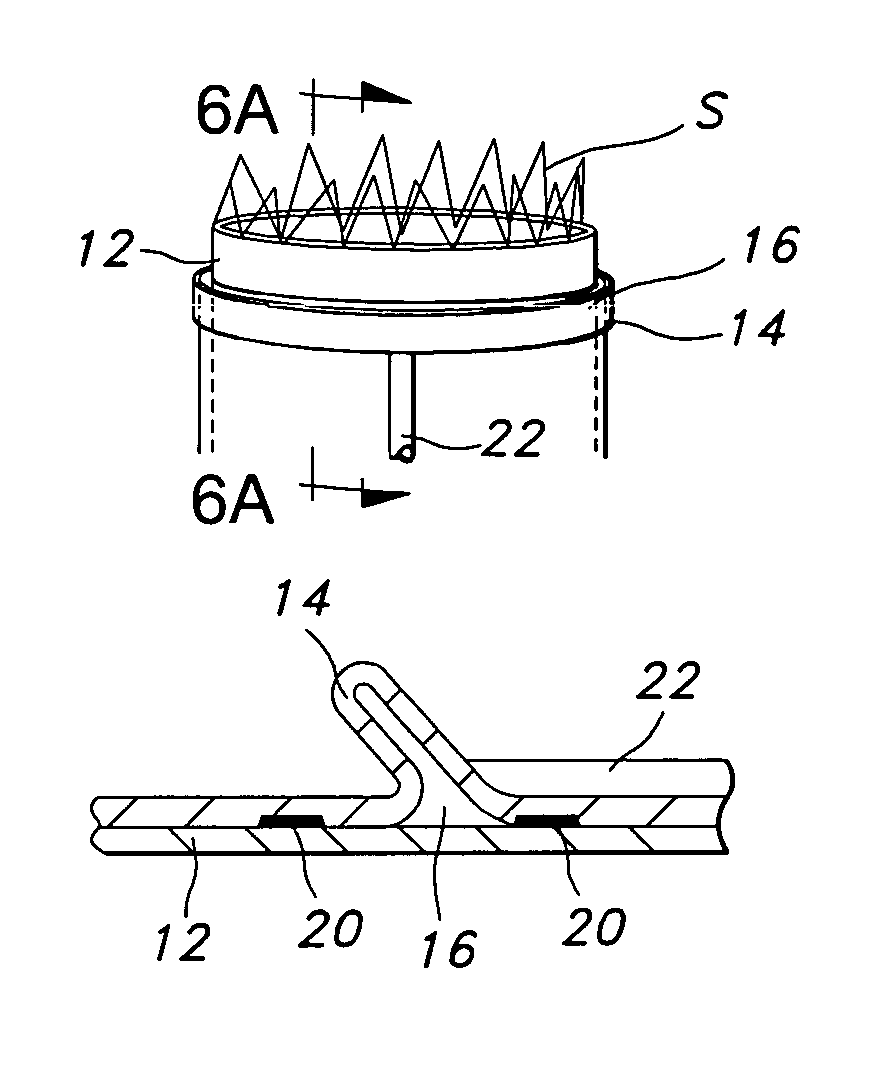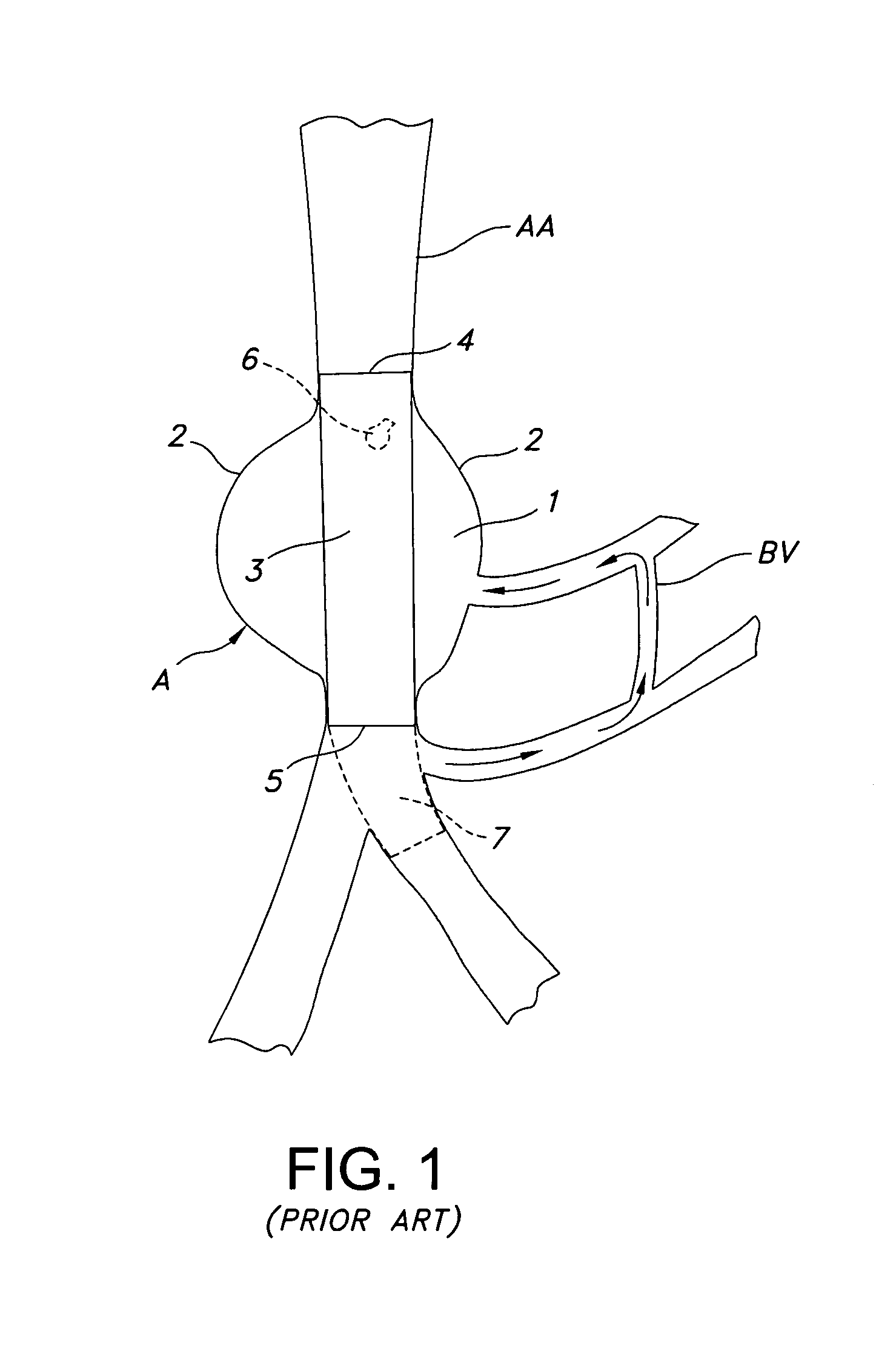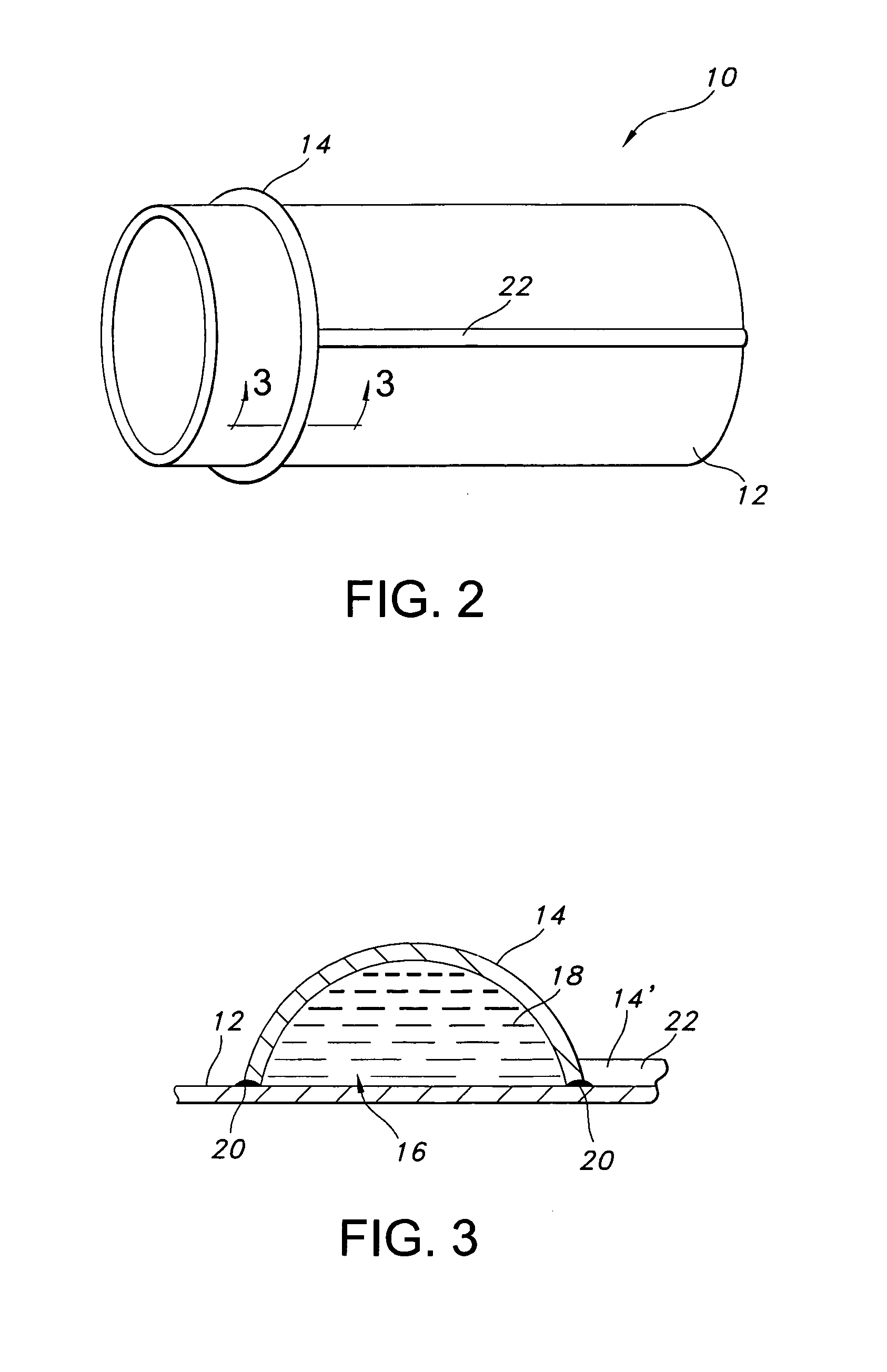Aortic artery aneurysm endovascular prosthesis
- Summary
- Abstract
- Description
- Claims
- Application Information
AI Technical Summary
Benefits of technology
Problems solved by technology
Method used
Image
Examples
first embodiment
[0028]With reference to FIG. 2, an endovascular prosthesis is shown and designated with the reference numeral 10. Reference will be made herein to the prosthesis being endovascular, although as pointed out above, the prosthesis may be used in other applications. The prosthesis 10 generally includes a tubular member 12 and an outer covering 14 sealed to portions of the tubular member 12 so as to define a pocket 16 therebetween. A filling agent 18, which is preferably substantially incompressible, is disposed in the pocket 16 so as to at least partially fill the pocket 16 and cause it to extend from the tubular member 12. With the pocket 16 being at least partially filled by the filling agent 18, the filled pocket 16 may press against a portion or portions of the wall of a blood vessel to act as a seal thereagainst. Consequently, the seal may be used to reduce the likelihood of Type I endoleaks.
[0029]The tubular member 12 may be of any endovascular prosthetic construction known, such ...
second embodiment
[0045]With reference to FIG. 10, the subject invention is shown, wherein the endovascular prosthesis 10′ is formed with a Y-shape, i.e., bifurcated form, having a main body 30 from which extend two branches 32. The endovascular prosthesis 10′ may be used in the aortic artery, with the branches 32 extending into the iliac arteries. Here, it is preferred to have the pocket 16 be located in proximity to the end of the main body 30, which is the upstream end of the prosthesis 10′ relative to blood flow. In all respects, the endovascular prosthesis 10′ is formed and operates with the same principles described above with respect to the endovascular prosthesis 10. Other shapes of the endovascular prosthesis, such as tapered, stepdown, and varying diameter prostheses, are useful and possibly can be used.
[0046]Furthermore, one or more of the pockets 16 may be located in proximity to modular components (such as extension 7 discussed above) connected to the endovascular prosthesis 10, 10′ to i...
PUM
 Login to View More
Login to View More Abstract
Description
Claims
Application Information
 Login to View More
Login to View More - R&D
- Intellectual Property
- Life Sciences
- Materials
- Tech Scout
- Unparalleled Data Quality
- Higher Quality Content
- 60% Fewer Hallucinations
Browse by: Latest US Patents, China's latest patents, Technical Efficacy Thesaurus, Application Domain, Technology Topic, Popular Technical Reports.
© 2025 PatSnap. All rights reserved.Legal|Privacy policy|Modern Slavery Act Transparency Statement|Sitemap|About US| Contact US: help@patsnap.com



